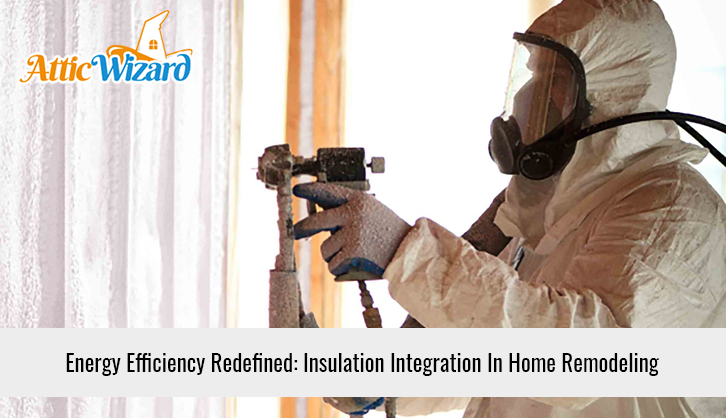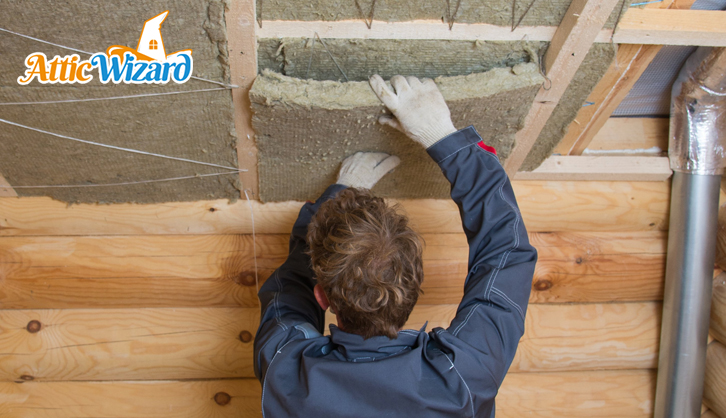Energy Efficiency Redefined: Insulation Integration in Home Remodeling
In an era where sustainability and energy efficiency are paramount, homeowners seek innovative ways to reduce their carbon footprint and lower their energy bills. One groundbreaking approach to redefining energy efficiency in home remodeling is the integration of insulation. By combining advanced insulation techniques with remodeling projects, homeowners can achieve unparalleled comfort, significant energy savings, and a greener future.


Let’s delve into the world of insulation integration and discover how it can transform your home into an energy-efficient sanctuary.
Enhancing Comfort and Temperature Control with Insulation During Home Remodeling
One effective way to enhance comfort and temperature control during home remodeling is by incorporating insulation. Insulation acts as a barrier, preventing heat transfer between the home’s interior and exterior. By insulating walls, ceilings, floors, and even attics, homeowners can experience improved thermal insulation, keeping the indoor environment more stable and comfortable throughout the year. Insulation helps to regulate indoor temperatures, reducing heat loss during winter and minimizing heat gain during summer.
This creates a more pleasant living space and reduces reliance on heating and cooling systems, leading to potential energy savings and lower utility bills. With insulation integration, homeowners can enjoy a more comfortable and consistent indoor environment in their remodeled homes.
Innovative Techniques for Optimal Energy Efficiency in Insulation Integration
Several innovative techniques are being employed regarding insulation integration for optimal energy efficiency in home remodeling. One such technique is spray foam insulation, which creates a seamless and airtight barrier, minimizing heat loss and air infiltration. Another technique involves installing reflective insulation materials, which reflect radiant heat and enhance thermal performance. Additionally, advanced insulation materials such as aerogel, which is lightweight and has exceptional thermal properties, are used for superior energy efficiency.
Furthermore, techniques like insulated concrete forms (ICFs) and structural insulated panels (SIPs) are gaining popularity due to their high insulation value and minimal thermal bridging. These innovative techniques in insulation integration enable homeowners to achieve optimal energy efficiency, reduce energy consumption, and enhance the overall comfort and sustainability of their remodeled homes.
Commonly Used Insulation Materials in Home Remodeling
In home remodeling projects, several insulation materials are commonly used to improve energy efficiency. One popular option is fiberglass insulation, which consists of fine glass fibers and is known for its affordability and effectiveness. Another widely used material is cellulose insulation, made from recycled paper or plant fibers, which offers good thermal performance and is eco-friendly.
Foam insulation, including spray foam and rigid foam boards, is another common choice due to its excellent insulating properties and ability to fill gaps. Additionally, mineral wool, derived from natural or synthetic minerals, provides thermal and sound insulation. These commonly used insulation materials in home remodeling projects offer different benefits and can be selected based on budget, performance requirements, and environmental considerations.
Common Challenges in Implementing Insulation Integration in Home Remodeling
Implementing insulation integration in home remodeling can face its fair share of challenges. One common obstacle is homeowners’ and contractors’ lack of awareness and understanding of the benefits and techniques involved. The limited availability of skilled professionals experienced in insulation integration can pose a challenge.


Additionally, retrofitting insulation into existing structures may require careful planning and modifications to accommodate the insulation materials. Furthermore, budget constraints and the need for upfront investment can be hurdles. Overcoming these challenges requires education, collaboration with experts, and careful planning to ensure a successful insulation integration project.
Final Words
Energy efficiency is no longer just a buzzword in home remodeling; it has become necessary for a sustainable future. Insulation integration redefines energy efficiency by providing homeowners with enhanced comfort, significant energy savings, and positive environmental impact. By embracing this innovative approach, homeowners can transform their houses into energy-efficient havens that benefit their wallets and contribute to a greener planet. Embrace the power of insulation integration and embark on a remodeling journey that sets new energy efficiency standards
